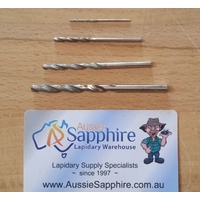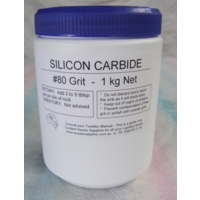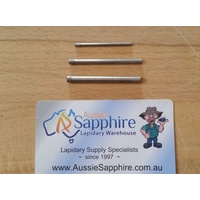If you are new to rock tumbling, we recommend you read this article with some basic hints and tips.
Most tumblers come with a basic set of instructions but some may like to do a little reading on the subject before buying their tumbler. Below are some basic hints and tips as well as some internet links for further exploration.
Tumblers can be used to polish a range of material - not just rock - so they are useful for a wide range of uses from rock polishing, jewellery making, glass mosaic work, etc. Good quality tumblers will last a lifetime if well looked after and so are a good investment in your hobby. One of the beauties of Tumbling is you cant really get it completely wrong - you will make mistakes but these will rarely be irretrievable and you can learn from these and improve results.
Selection of Material: Careful selection of Rocks will provide the best finished results - cracked or very sharp rocks may be best removed or broken/roughly shaped before starting (wear appropriate safety equipment before attempting this). Rocks of similar hardness and mixed sizes will work best. Include some small rocks to help carry the grit efficiently to the whole load - use a range of sized rock up to about half the diameter of the barrel ensuring all rocks move freely as the barrel turns.
Setting Up - Load the barrel around 2/3 full with rocks and add just enough water to reach the rocks (rainwater is best if possible). The Barrel must always be at least half full and no more than 3/4 full. If your load is too small or you have lost some volume in stage 1 or 2, you can add plastic pellets to make up volume. Make sure the Lid and Recess is completely clean before closing the lid. Sit the barrels on the Tumbler and turn on. It is wise to watch for a short time and check there are no leaks and the barrel is rotating well before leaving the unit to run continuously for around 6-7 days (you can check every 24 hours if you like).
Grit Recommendations - The first stage is usually a Coarse Grind using #80 Grit Silicon Carbide or similar. If rocks are very smooth or you are using a vibratory tumbler, you can skip this first stage and go straight to the Medium Grind. Usually the Medium Grind would be #220 Silicon Carbide. The 3 stage is Pre-Polish and can use #600 Silicon Carbide or another type of pre-polish such as #1500 Aluminium Oxide.
Amount of grit to use is indicated by your tumbler instructions but as a guide, you would add 3-5 tablespoons of grit per kilo of rock for the 1st and 2nd stages and a little less (2-4 tablespoons per kg rock) for the 3rd and polish stages. You will usually be adding a bit less than a kilo of rock in a 3 pound barrel so fine to work at the lower end of those usage rates.
Remember to read the instructions carefully but a few things to remember. Load the tumbler barrel to its optimum level - usually arond two thirds to three quarters full as this creates the most efficient tumbling conditions. Check each stage of the process and only move on to the next once you are happy that each stage is complete.
DO NOT tip tumbler contents down the sink - this WILL block your drain and be expensive to fix - better to tip outside in the garden (dispersed) or allowed to dry completely and solid contents thrown away in the Bin (waste is inert and non toxic). Consider buying a spare barrel to keep grinding and polishing stages separate. You will still need to wash between stages carefully but this greatly reduces the chance of coarse grit contaminating the polishing stage.
Polishing - Polishing is usually the most problematic stage and you may need to use some trial and error before getting the desired result. The Cerium Oxide in our Starter Kit 3 is one of the more popular polishes available and suitable for many types of rocks BUT not all. Tin Oxide (in Starter Kit 2) or Aluminium Oxide #14k (Starter Kit 1) are both good general purpose polishes for most types of rocks including the harder ones up to 8 hardness and are worth a try if the Cerium Oxide is not working well for you. Some may need different polishes so keep trying until you find the right one.
Cerium Oxide works well for softer materials such as opal and glass as well as the quartz group rocks - eg. in the 6 to 7 hardness range. For harder rocks such as garnet, topaz, beryl or spinel, we would suggest trying Tin or Aluminium Oxide. Not all rocks will polish well - a good rule of thumb is if the rock is glossy when wet but dulls as it dries out, it is a good candidate for tumble polishing - if the rock remains dull when wet, or is cracked or very porous, it is unlikely to polish well.
If all previous steps have been done well, polish should come up relatively quickly. You can check if your rocks are ready to polish by doing a rub test - just get some scrap thick denim or leather and apply a slurry of your polish - vigorously rub the rock on the material and see if a polish starts to come up. If it doesnt, the rocks may need more time in the previous step or may need an interim pre-polish step.
A few links of interest:
- Rock Tumbling Hobby site including a nice set of basic information and a very active forum with lots of good advice
- Dads Rock Shop - Tumbler FAQ - your question may be answered here.
- Some information on rock tumbling collected by Allan Silverstein
- About.com - a range of information on tumbling (rotary and vibratory)
- Aussie Lapidary Forum - ask ALF members for advice on tumbling
- Mama's Minerals Information on Tumbling - a series of excellent articles including information on how to tumble glass and drill holes in finished rocks/glass.
Tumbling items other than rocks:
Tumbling coins:-
This is a complicated subject beyong the scope of this article. The most important thing is if your coins are likely to be very old and/or valuable, DO NOT CLEAN THEM before getting expert advice - particularly in a tumbler. However, if you have found a number of modern coins while out treaure hunting and just want to clean them up before spending them, giving them a whirl in the tumbler is definitely worth considering.
Most recommend tumbling coins of similar type together - do not mix denominations (1c/2c, 5c/10c/20c or $1/$2). Most suggest tumbling with sand as the cleaning agent, some recommend adding extras such as vinegar, salt and plastic pellets. We have not used a tumbler for this purpose so suggest you check out this helpful article from Treasure Enterprises for a more detailed "recipe" (you'll have to scroll about 3/4 the way down the page).
Polishing Sea Beans:-
One off-beat use for a tumbler is to polish sea beans (or seeds which drift across the oceans). There are a number of different species which can be found on the beach and many tumble polish beautifully (such as the example in the photograph from www.beachbeans.com). See here for a helpful article on how to tumble polish sea beans from a website devoted to the subject. Seeds will be fairly soft compared to rock so you dont want to go too aggressive - most recommend crushed nut shell to polish with.
Tumbling Glass:-
There are a few scenarios where you'll want to tumble glass. Mosaic artists working with glass often tumble the pieces lightly to take the sharp edges off to make it a bit safer and more comfortable to work with - do not add an abrasive here to prevent clouding of the glass - just tumble the pieces with water in this case (plastic pellets can be added as a cushioning agent). Others are looking for the "beach glass" or frosted effect - can use a light abrasive to give the matt, unpolished look. If you want to polish your glass back to a shiny gloss, cerium oxide is the polish of choice for most tumblers. Remember that Obsidian is naturally formed glass so use the same techniques on that material. Glass can be brittle so often a good idea to add a cushioning agent such as plastic pellets - vibratory tumblers work well on this more fragile material also.
Polishing Metal:-
Tumblers are great for polishing metal - usually brass for polishing shell casings and the like or gold/silver for jewellery polishing. Both types will need a slightly different approach. Vibratory tumblers tend to be often used for polishing metal but rotary tumblers will also work well. For a soft, gentle medium, consider using crushed nut shell to polish gold/silver - shell used alone and dry can remove tarnish from silver - add a little red rouge for a good polish on both gold and silver. Alternatively, you can use a wet polishing method with stainless steel shot or porcelain shapes and a burnishing compound. Metal Polishing can be complex so please contact us for advice if you are interested in this topic.







